Read More!
As I have continued to develop my risoprint illustration style, I wanted to work on something a little more conceptual than alphabet cards (as fun as those are). Last week I was reading something – I can’t even recall what it was, but it must have been erudite! – and the thought came to me: ‘Read more, get smarter’ …
As I have continued to develop my risoprint illustration style, I wanted to work on something a little more conceptual than alphabet cards (as fun as those are). Last week I was reading something – I can’t even recall what it was, but it must have been erudite! – and the thought came to me: ‘Read more, get smarter’. Immediately following that was, ‘Hey, that’s a good idea for an illustration!’
I sat down to sketch up some ideas. The first one was easy, inspired by my eclectic taste in reading, as I like to dip in and out of different books depending on available time and mood. Some of my books are unputdownable (Agatha Christie), others are taken in little daily bites (poetry, essays) and others I open sometimes (history, psychology, philosophy).
Not many would know this about me, but when I was in my mid-20s, I did a short course on counselling, which provided an overview of the different streams of therapy; it also lead to a casual dipping into philosophy. Although I decided at the time not to pursue another career, the interest remains. It amused me therefore to juxtapose my fictional (ahem) reader reading two antithetical books at a time.
The second illustration was literally inspired by my own perpetual piles of books on the go that are scattered around my apartment, the idea being that one doesn’t have to be a pedant or snob about reading material. Pick a book, any book, and just dive right in.
Originally I was going to put my favourite books on the spines, but realised clearly they needed to relate to water in some way. I’ve only read two of these – Rites of Passage by William Golding (a favourite author, and this book was unputdownable; I think I randomly picked up the book while on holiday somewhere and ended up riveted), and Robert Drewe’s The Drowner. I read it not long after it was published in 1996, and remember nothing of it now, except that I assume I enjoyed it as it is still on my shelf, and not donated to a charity shop.
Booksellers love to promote books in summertime, since many people are on holiday then, but why wait? Go on – DIVE RIGHT IN, RIGHT NOW.
Finite Homage
 Cover art for PlayStation 2 video game IcoWhile I was researching yesterday’s story about Giorgio de Chirico, I came across one of his evocative paintings of two figures running through a cityscape … that turned out to be the cover of Ico, a Japanese PlayStation 2 video game released in 2001! It made me chuckle that I was momentarily fooled, but I was also impressed by its verisimilitude to de Chirico’s style.
Cover art for PlayStation 2 video game IcoWhile I was researching yesterday’s story about Giorgio de Chirico, I came across one of his evocative paintings of two figures running through a cityscape … that turned out to be the cover of Ico, a Japanese PlayStation 2 video game released in 2001! It made me chuckle that I was momentarily fooled, but I was also impressed by its verisimilitude to de Chirico’s style.
The designer of the game, Fumito Ueda, painted it himself, saying that the surrealistic world of de Chirico matched the allegoric world of Ico. He was particularly inspired by de Chirico’s painting of a tower in The Nostalgia of the Infinite (the last painting in yesterday’s story). While the art of the video game was lauded, I was disappointed to discover it was typical of Japanese animé.
Goes to show you can’t judge even a video game by its cover!
Reflecting the Female
 I only recently discovered the art of Tina Berning, thanks to that magical font of information: Pinterest. I love her technique – the use of mixed media, collage and ephemera as a base, the unfinished look of them – more than the subject, although ‘reflecting the female role in media is one of the core issues in her artistic work. Her early passion for editorial illustrataion led her to an intensive contemplation on the human figure.’ [Wikipedia]
I only recently discovered the art of Tina Berning, thanks to that magical font of information: Pinterest. I love her technique – the use of mixed media, collage and ephemera as a base, the unfinished look of them – more than the subject, although ‘reflecting the female role in media is one of the core issues in her artistic work. Her early passion for editorial illustrataion led her to an intensive contemplation on the human figure.’ [Wikipedia]
 Berning has been focused on drawing and illustration since 2000; she has been published widely, and has had numerous solo exhibitions. Her website doesn’t seem to hold much information on her, but there is plenty more gorgeous and inspiring work to browse through.
Berning has been focused on drawing and illustration since 2000; she has been published widely, and has had numerous solo exhibitions. Her website doesn’t seem to hold much information on her, but there is plenty more gorgeous and inspiring work to browse through.
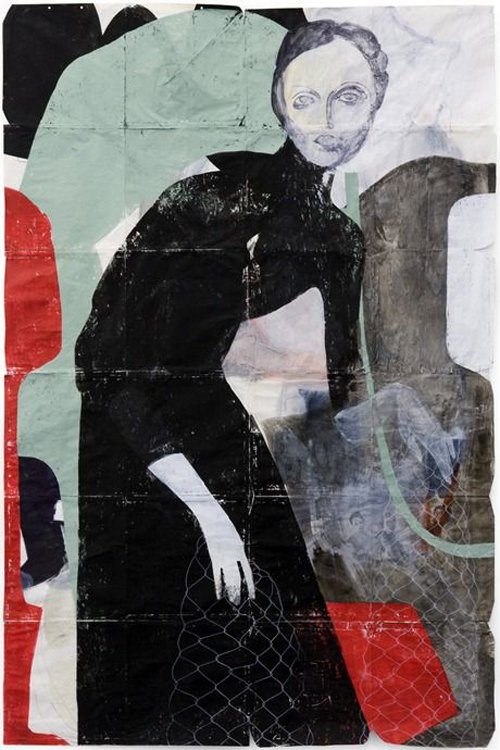
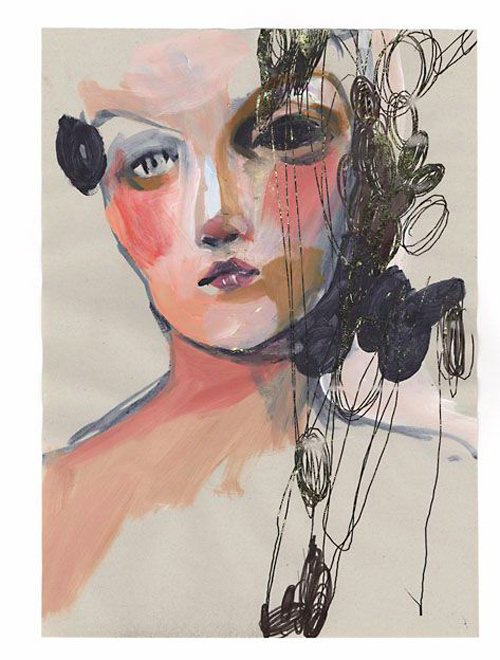
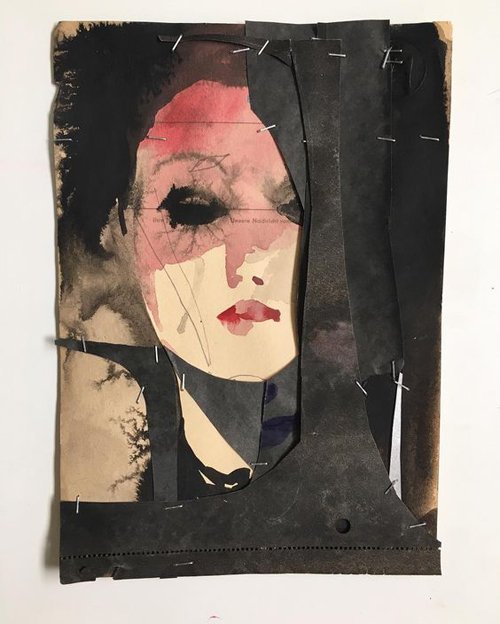

A Rainbow of Happiness
 To celebrate the International Day of Happiness, I have made a little slideshow of some of my travel photos, taken in Vietnam, Hong Kong, Portugal, Morocco and my hometown of Melbourne. I call it a six second rainbow of happiness!
To celebrate the International Day of Happiness, I have made a little slideshow of some of my travel photos, taken in Vietnam, Hong Kong, Portugal, Morocco and my hometown of Melbourne. I call it a six second rainbow of happiness!
I hope you have been able to do something that makes you happy today.
Drawn to Lines
 Femme se reposant, 1937
Femme se reposant, 1937
Henri Matisse (1869-1954) is one of my favourite artists. One of the Fauves, he was famous for his use of colour, and was known mainly for his paintings, but I in fact love his drawings, sketches and paper cutouts even more. The quote below from an article in The Boston Globe about an exhibition of Matisse’s drawings describes their elegant purity so perfectly:
The drawings of Henri Matisse must surely be among the most beautiful objects made by any human hand in the 20th century — or, come to think of it, ever. You look at them, you register their legendary ease and simplicity, and it’s very easy indeed to take them for granted — to assume that in some strange way they were born and not made.
Matisse’s characteristic line, at once classically concise and dreamily unmoored, has in that sense become a cliché, part of the visual air that we breathe. [Sebastian Smee, from The Boston Globe]
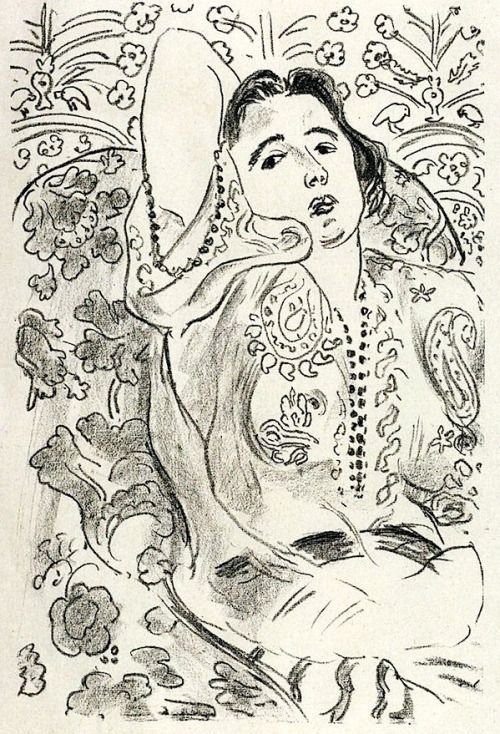 Arabesque, 1924
Arabesque, 1924
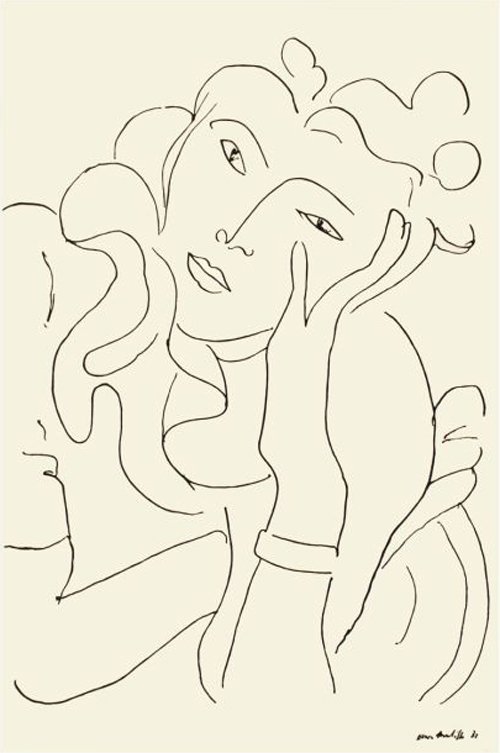 La Fleur, 1937
La Fleur, 1937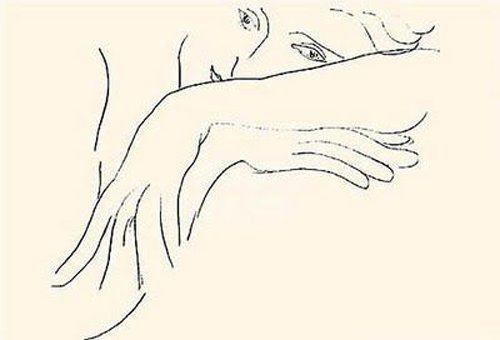 The Handkerchief, 1935
The Handkerchief, 1935 The Romanian Blouse, 1942I have been using Pinterest actively only for a year or two, and began mainly for the purposes of research. The more I used it of course, the more personalised my home page became: amongst a sea of vintage hats and fashion, out pop the works of Matisse, and in particular his line drawings, sketches and cutouts. With time, it’s been interesting to see the algorithms at work, refining my homepage according to my personal aesthetic. Obviously, the more Matisse drawings I saved – the ones I was naturally drawn to – the more I was shown. Then my love of Matisse drew in other artists who also employ linework in their art (more on them another time).
The Romanian Blouse, 1942I have been using Pinterest actively only for a year or two, and began mainly for the purposes of research. The more I used it of course, the more personalised my home page became: amongst a sea of vintage hats and fashion, out pop the works of Matisse, and in particular his line drawings, sketches and cutouts. With time, it’s been interesting to see the algorithms at work, refining my homepage according to my personal aesthetic. Obviously, the more Matisse drawings I saved – the ones I was naturally drawn to – the more I was shown. Then my love of Matisse drew in other artists who also employ linework in their art (more on them another time).
I don’t know how many artworks Matisse made – they seem innumerable, and he kept on working almost until his death at 84, but here are a few of his monochrome drawings that I like.
(All images found on Pinterest. I have tried to discover the correct titles and dates for each work, but searching in the Google is like looking for a needle in a haystack sometimes, and there are a few which don't include full information.)
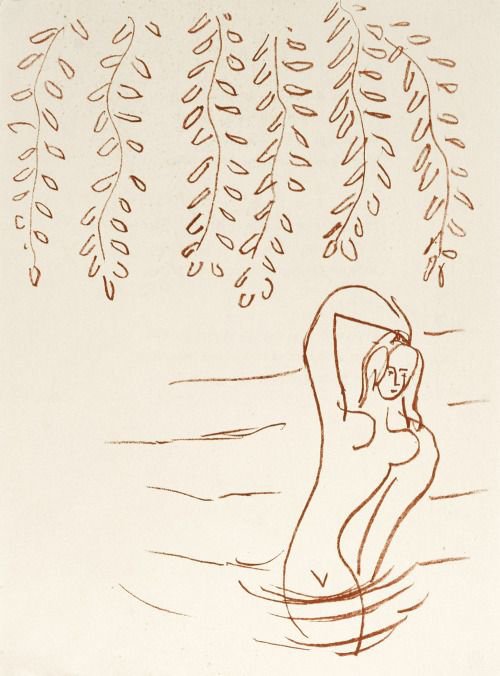 Hanging branches, 1948
Hanging branches, 1948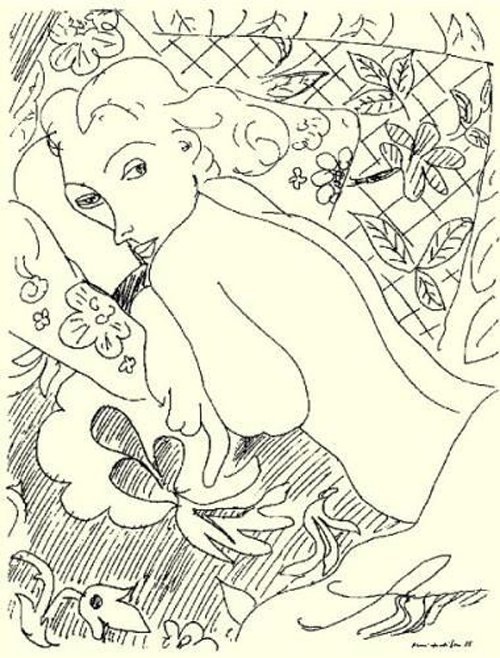

 1942
1942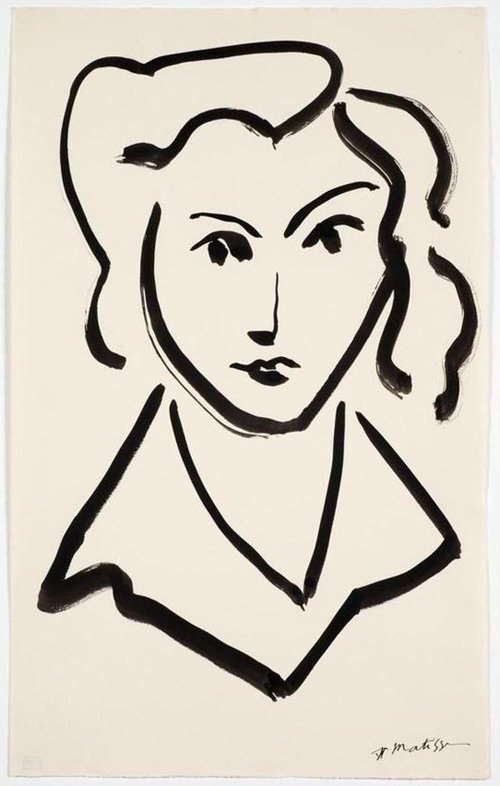 Tete de femme (Head of a Woman)
Tete de femme (Head of a Woman)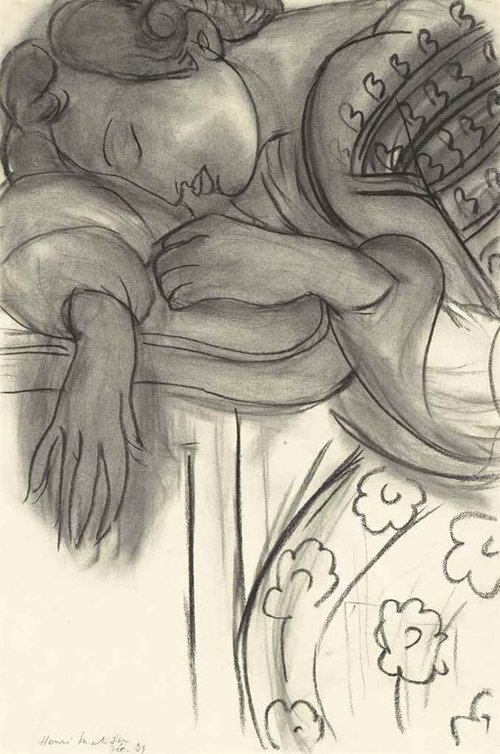 Étude pour La Dormeuse, 1939
Étude pour La Dormeuse, 1939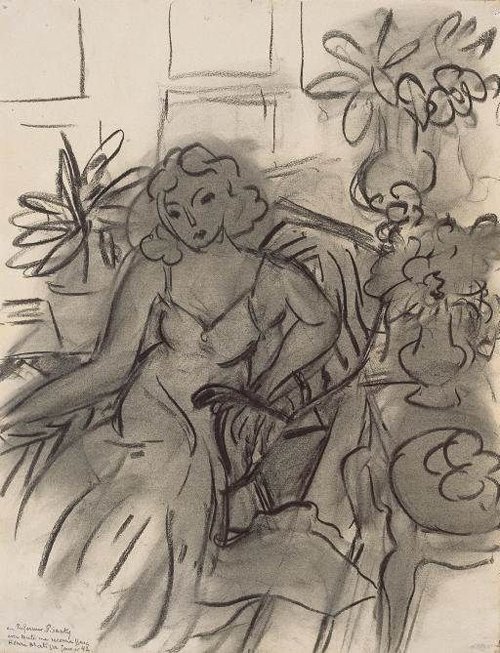 Femme au fauteuil, 1941
Femme au fauteuil, 1941 Lithograph, 1935
Lithograph, 1935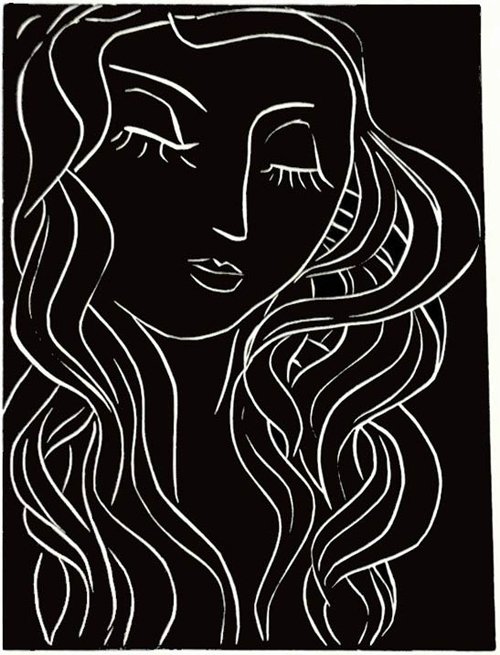 Linocut; Sleeper with the long eyelashes, 1944
Linocut; Sleeper with the long eyelashes, 1944




